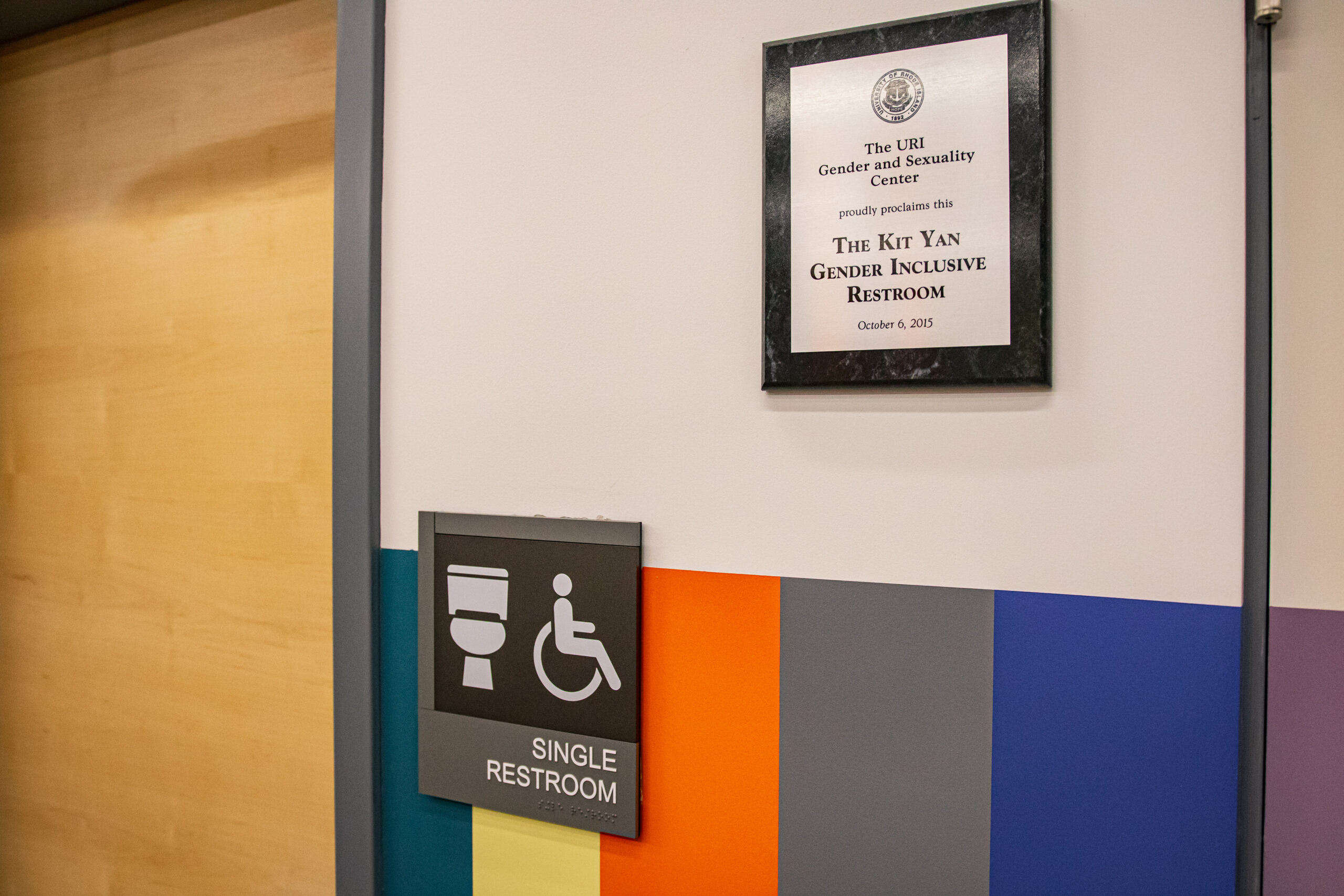URI works to satisfy students’ request from 2013 of having gender neutral bathrooms in all university buildings. PHOTO CREDIT: Siobhan Richards
In 2013, a group of students approached former University of Rhode Island President David Dooley asking for at least one gender-inclusive bathroom in each building on campus by 2020.
Dooley promised to create more gender-neutral bathroom signage and turn single-stall bathrooms into gender-neutral options throughout campus after the request in 2013.
The request has not been fulfilled to have at least one gender-inclusive bathroom in each building on campus. However, Annie Russell, the director of the Gender and Sexuality Center (GSC), said significant progress has been made since the original call to action in 2013.
Students at the GSC held a protest on the Quad in 2019 to push this promise into action. As a result, the LGBTQIA+ Commission was formed by the Center to make this come true.
Erin Earle, the former co-chair of the LGBTQIA+ Commission and the current director of campus visit experience, said that there were many steps in this project.
The first thing that had to be done was identify all of the single-stall bathrooms on campus that could be converted into gender-inclusive bathrooms, according to Earle. This entailed going from building to building and making a list of where the single-stall bathrooms were and making note of that.
“In 2019 we identified more than 90 bathrooms and changed them,” Russell said.
Earle mentioned that the process to change these bathrooms had complications.
“We had to order all new signs that were inclusive of all genders and get them approved,” Earle said. “A lot of the single-stall bathrooms were either male or female, but also still showed a picture of only the two genders.”
She knew that the signs needed to be changed to be inclusive to all people. The process of ordering new signs was expensive and time-consuming, according to her; however, these were not the only struggles.
Earle said that the University needed special permission from the state of Rhode Island to change the single-stall bathrooms to gender-neutral due to building codes.
In the state of Rhode Island, building codes state that there must be an equal number of female and male bathrooms inside of state facility buildings. Russell explained that these codes were a part of legislation to be more inclusive to females in the 1970s.
Later in 2019, due to budget cuts, Dooley cut all commissions, which included the one Earle and the rest of the team that was working on to change bathroom signs. The project was then put on hold.
However, Annie Russell has said that the GSC has worked on the approval to continue putting the remaining signs up since then.
Coming up on a decade of this work being done, the project to get gender-inclusive bathrooms on campus will reach a big accomplishment by the end of the semester, Russell said.
“By the end of the semester, the current University map will include an overlay feature to highlight where the gender-inclusive bathrooms on campus are located,” she said.
By May 2022, all of the single-stall bathrooms identified in 2019 will have been changed to gender-inclusive signs, according to Russell.
A problem still ongoing in the project is the accessibility of bathrooms. There is not a single-stall bathroom in every building on campus, so at this time, there cannot be an inclusive, easily accessible bathroom in every building. For example, Russell said that the gender-inclusive bathroom that is located in the Memorial Union is on the third floor, which can be hard to reach and out of the way.
“Students wait up to 45 minutes to use this facility, and it is hard to find,” Russell said.
Both Russell and Earle hope that they can either construct new, gender-inclusive bathrooms or eventually make multi-stall bathrooms gender-inclusive.
At the moment, all residence halls and new buildings, or ones undergoing significant construction, have gender-neutral bathrooms on each floor.
An updated map that pinpoints each gender-neutral bathroom on the Kingston campus can be found on the GSC website.





